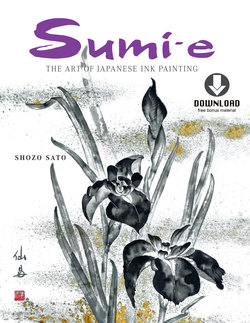Читать книгу Sumi-e - Shozo Sato - Страница 8
На сайте Литреса книга снята с продажи.
ОглавлениеPreface
Years ago, when I was still a young art student in Japan, a Zen master once asked me: “What is the core function of art for you?” I pondered over this koan for some weeks. Then I replied to him, “It is vitamin C for the soul.” He asked me to elaborate, and I explained that humans require vitamin C to maintain good health, but too much is simply wasted, that is, expelled from your body; likewise, art brings energy to your soul, however, too much can lead to decadence.
No matter how you as an individual may answer that question about art’s function, artwork should express a universal reality, whether tranquility or agitation. The goal of the Japanese arts through the ages has been to create a sense of tranquility and peace. This applies to the art of monochrome, commonly known as sumi-e.
Den sho 伝承 (den = oral; sho = tradition or handing down) is the traditional oral way of passing down technical information, in all forms of art, to each successive generation. This book was written with the intention of translating this longstanding Asian teaching method from its oral form to the written page. It is difficult to offer a den sho–like, “one to one” teaching experience through a book. But I hope that some form of this practice’s power will be conveyed even through the written word, as I pass along the experience I received from my own mentor years ago in the art of sumi-e.
Den sho means that the mentor, in addition to giving oral instruction, will often literally take the hand of the student and guide him or her. This close contact in instruction also leads the mentor to convey over time a philosophy of art and a way of life to the student; thus, this approach to creating art of course reaches beyond the commercialization of the art form. In fact, a tenet of the teaching of the fine arts at the university level in Japan is that students are not allowed to enter their work in competitions or display them in galleries, simply because if a painting is sold, the thinking goes, a young student’s mind will be set on the style and subject matter of the work rather than its meaning, and the student will lose his or her own intrinsic creative spirit.
In this book, my hope is that while the “how to” has been shown in step-by-step fashion, some of my deeper experience will also be conveyed through the words and images. In my classes at university and professional levels, and now with you here in these pages, it has been my mission to pass my experience on together with the philosophical and technical aspects of the art of sumi-e.
